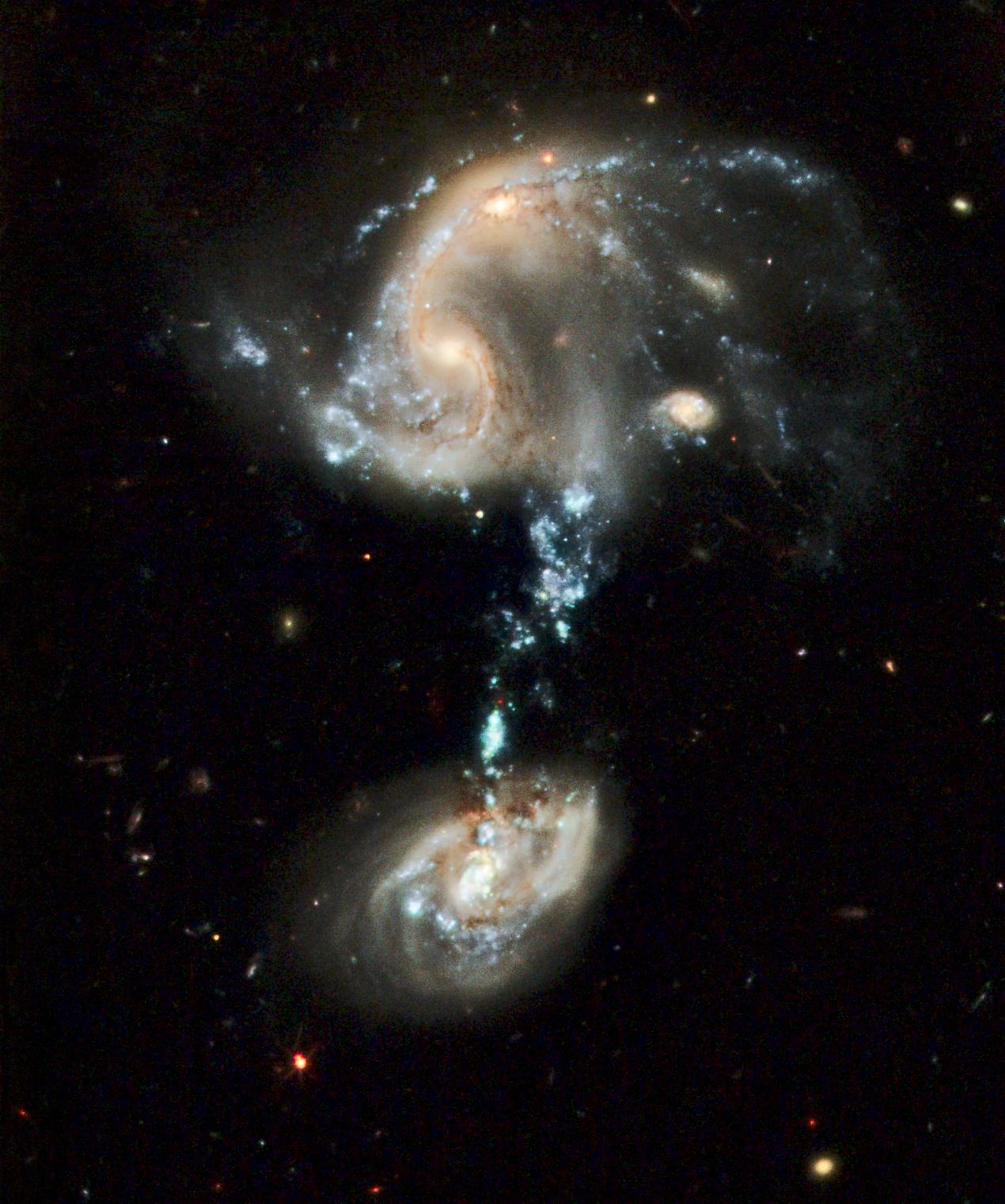
Interacting Galaxy Group Arp 194
The Hubble Space Telescope photographed this peculiar system of galaxies known as Arp 194. This interacting group contains several galaxies, along with a "cosmic fountain" of stars, gas, and dust that stretches over 100,000 light-years. The upper component of Arp 194 appears as a haphazard collection of dusty spiral arms, bright blue star-forming regions, and at least two galaxy nuclei that appear to be connected and in the early stages of merging. A third, relatively normal, spiral galaxy appears off to the right. The lower component of the galaxy group contains a single large spiral galaxy with its own blue star-forming regions. However, the most striking feature of this galaxy group is the impressive blue stream of material extending from the northern component. This "fountain" contains complexes of super star clusters, each one of which may contain dozens of individual young star clusters. The blue color is produced by the hot, massive stars that dominate the light in each cluster. Overall, the "fountain" contains many millions of stars. These young star clusters probably formed as a result of the interactions between the galaxies in the northern component of Arp 194. The compression of gas involved in galaxy interactions can enhance the star-formation rate and give rise to brilliant bursts of star formation in merging systems. Hubble's resolution shows clearly that the stream of material lies in front of the southern component of Arp 194, as evidenced by the dust that is silhouetted around the star-cluster complexes. It is therefore not entirely clear whether the southern component actually interacts with the northern pair. For more information, visit: hubblesite.org/news_release/news/2009-18
